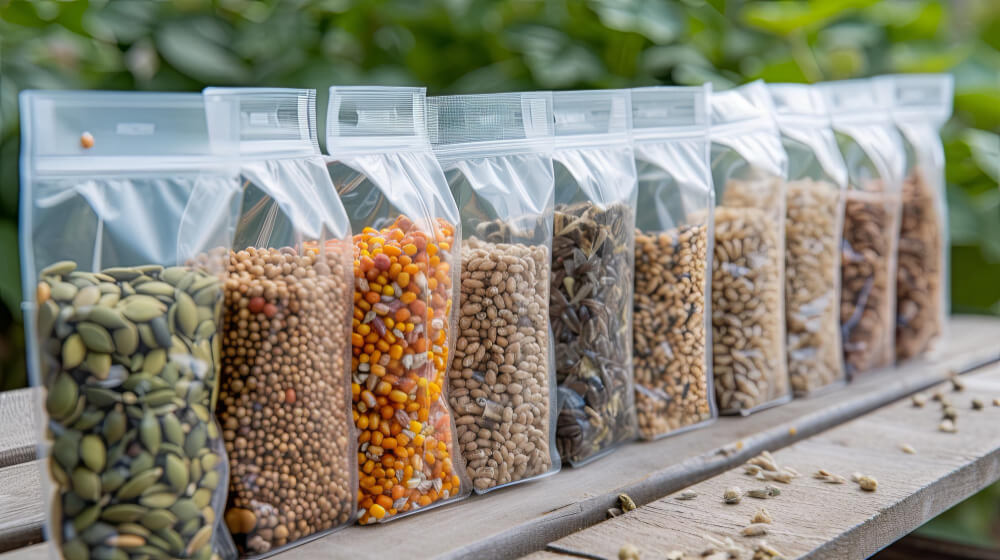
Seed banks represent a crucial strategy in conserving plant genetic resources, vital for ensuring biodiversity, enhancing food security, and supporting agricultural resilience. They serve as repositories that store seeds, safeguarding the genetic diversity necessary for crop improvement and adaptation to changing environmental conditions.
What is a Seed Bank?
A seed bank functions as a gene bank for seeds, storing genetic material from various plant species. This collection acts as a buffer against potential losses of biodiversity due to environmental changes, diseases, or pests. By preserving seeds, these banks maintain the genetic diversity that is crucial for the resilience of ecosystems and agricultural systems.
How Seeds are Stored in Banks?
The process of storing seeds in a seed bank involves several meticulous steps to ensure their long-term viability. Initially, researchers decide which seeds to collect, often prioritizing endangered plant species. The seeds are collected when ripe, which is crucial for their viability. After collection, seeds are cleaned to remove impurities and dried in a controlled environment to reduce moisture content, which is critical for preventing mold and decay. Once dried, the seeds are sealed in airtight containers and stored at low temperatures, typically around -20°C, to slow down their metabolic rate and extend their viability. This cold storage can preserve most seeds for decades, although the exact shelf life varies depending on the seed type.
Some seeds, due to their unique characteristics, may require cryopreservation or in-vitro storage, where living plant tissues are frozen in liquid nitrogen at temperatures around -196 degrees Celsius. This method is especially useful for species that don’t produce seeds or have seeds that don’t respond well to conventional storage methods.
The world hosts over a thousand seed banks, each varying in focus and scale, from global repositories like the Svalbard Global Seed Vault to local community seed banks.
Need for Creating Seed Banks
The necessity for seed banks has grown in importance due to the escalating challenges of climate change, habitat destruction, and agricultural practices that reduce genetic diversity. Modern agriculture’s reliance on monocultures and high-yield varieties has led to a significant reduction in the genetic diversity of crops, making them more susceptible to diseases, pests, and changing climatic conditions. Seed banks preserve a wide array of plant genetics, providing a resource for reintroducing species and enhancing genetic diversity within crops.
How Seed Banks Can Help Indian Farmers
With reference to India, a nation with a rich agricultural heritage and diversity, seed banks hold special significance. They offer Indian farmers access to a variety of seeds, enhancing crop resilience and productivity. This diversity is especially critical for smallholder farmers, who can use diverse seed stocks to mitigate risks associated with crop failure and adapt to changing environmental conditions. Additionally, seed banks can support the conservation of indigenous plant varieties, preserving cultural heritage and traditional knowledge.
Seed Banks of India
India has seen the successful implementation of community seed banks, which have empowered farmers by providing access to a range of seeds, particularly those of traditional and indigenous varieties. These initiatives have conserved many plant varieties and enhanced food security and livelihoods in rural communities.
The Indian Seed Vault is a seed bank located in Chang La in Ladakh. It was jointly built by the Defense Institute of High-Altitude Research and the National Bureau of Plant Genetic Resources in 2010, and is the second largest seed bank in the world.
The National Gene Bank was established in the year 1996 to preserve the seeds of Plant Genetic Resources (PGR) for future generations. It has the capacity to preserve about one million germplasm in the form of seeds. Presently it is protecting 4.52 lakh accessions, of which 2.7 lakh are Indian germplasm and the rest have been imported from other countries. The world’s second-largest refurbished state-of-the-art National Gene Bank has been built at the National Bureau of Plant Genetic Resources (NBPGR), New Delhi. The revamped state-of-the-art National Gene Bank will serve the agriculture sector and the country while saving national heritage.
Why Farmers Should Adapt to Technical Innovations in Seed Banks
The integration of technological innovations in seed banking offers profound benefits. Advanced techniques in seed preservation, genetic analysis, and database management can significantly enhance the efficiency and effectiveness of seed banks. For Indian farmers, embracing these innovations means better access to high-quality seeds, improved crop varieties, and enhanced ability to respond to agricultural challenges.
How Seeds Banks Will Benefit India as an Agriculture-Based Country
For India, an agriculture-centric nation, seed banks are a strategic asset. They support agricultural resilience, enhance food security, and contribute to economic stability. By maintaining genetic diversity, seed banks provide a foundation for developing crop varieties that can withstand pests, diseases, and environmental stresses. This is crucial for ensuring the sustainability of agricultural production and the well-being of the vast population dependent on agriculture for livelihood.
Conclusion
Seed banks hold a pivotal role in contemporary agriculture, particularly in biodiverse and agriculture-dependent countries like India. They are not just repositories of genetic material but are fundamental to the resilience of agricultural systems, the preservation of biodiversity, and the sustenance of human societies. As global challenges intensify, the strategic importance of seed banks in safeguarding the future of agriculture and food security cannot be overstated. By embracing and enhancing seed bank initiatives, nations can ensure a more resilient and sustainable agricultural future.

